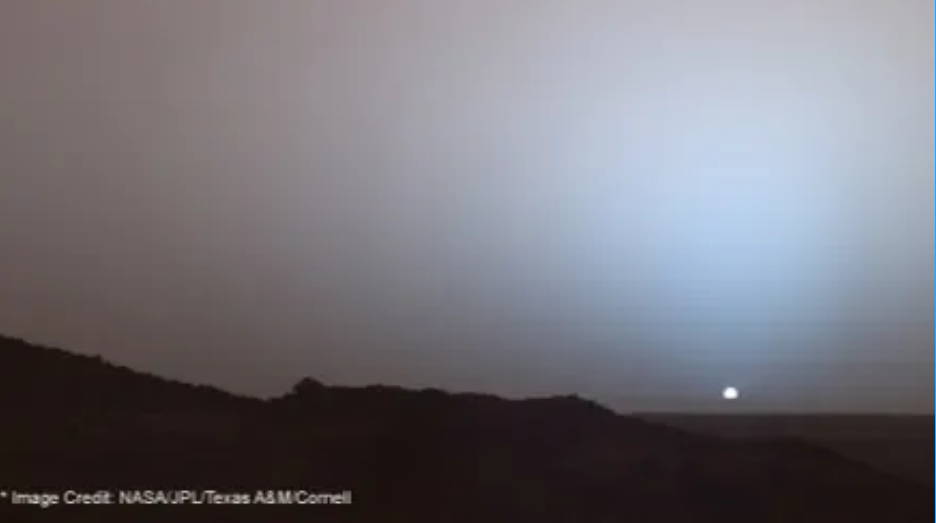On May 19, 2005, NASA's Mars Exploration Rover Spirit captured this stunning view as the Sun sank below the rim of Gusev crater on Mars. This Panoramic Camera mosaic was taken around 6:07 in the evening of the rover's 489th Martian day, or sol. *Mars Image Credits: Sunset on Mars
Featured Products
One of the most common questions asked by students is "Why is the sky blue?" or "Why is the Sun yellow?" The answer is found by understanding color science concepts and some basics of color addition. Assuming that the Sun is "white" as viewed from space (no atmosphere) and that the three primary colors of light (red, blue and green in equal hues, saturation levels, etc) compose the white color that is observed. As the white light enters the Earth's atmosphere, some of the blue wavelengths are scattered (Rayleigh Scattering) allowing the remaining two primary wavelengths to pass through to the observer. The sky will appear blue and the Sun appears yellow due to red and green wavelengths (color addition) passing through the atmosphere to the observer . Thus, the Sun takes on a yellow color and the Earth's sky appears blue.
Now enter the planet Mars and the same question is proposed by students: "What color is the Martian sky" and "What color will the Martian Sun appear to the astronaut walking on the surface?" Up to a few years ago, this question was merely a thought-provoking exercise without much evidence to back up the answer. The recent successful landing of NASA's Mars Polar Lander, sent last year to search for water and organic materials in the northern polar area of Mars, provides some real evidence. Many photos were sent back from the Lander and the photo seen here confirms the color science of the Martian atmosphere.
The sky of Mars has always been known to have a reddish hue due to the gaseous make-up and the suspended particulates. But what color would the Martian Sun appear to the observer? If the Sun once again with its "white" light (3 primary colors) is incident on the atmosphere and some of the red wavelengths are scattered, the remaining primary colors of blue and green will pass through to the observer. Referring to the color addition wheel, combining blue and green will result in cyan (sometimes referred to as peacock blue). So the Martian Sun, especially seen as a Martian sunset will appear cyan. The photo from NASA confirms our color science concepts! Can you predict the color of a Sun from a planet with a green sky? I can't wait to see that magenta Sun from Vulcan!
Sunset and twilight images are occasionally acquired by the science team to determine how high into the atmosphere the Martian dust extends, and to look for dust or ice clouds. Other images have shown that the twilight glow remains visible, but increasingly fainter, for up to two hours before sunrise or after sunset. The long Martian twilight (compared to Earth's) is caused by sunlight scattered around to the night side of the planet by abundant high altitude dust. Similar long twilights or extra-colorful sunrises and sunsets sometimes occur on Earth when tiny dust grains that are erupted from powerful volcanoes scatter light high in the atmosphere.
Buzz Putnam teaches physics at Whitesboro High School… among other things. He is the TV Host of the New York Regents Physics Show, Cornell University physics advisor, five time New York Science Teacher of the Year, and author of "Discrepant Events, a little Science Magic".
Award-winning physics teacher Buzz Putnam always shares his secrets to grabbing students' attention and making them think!


